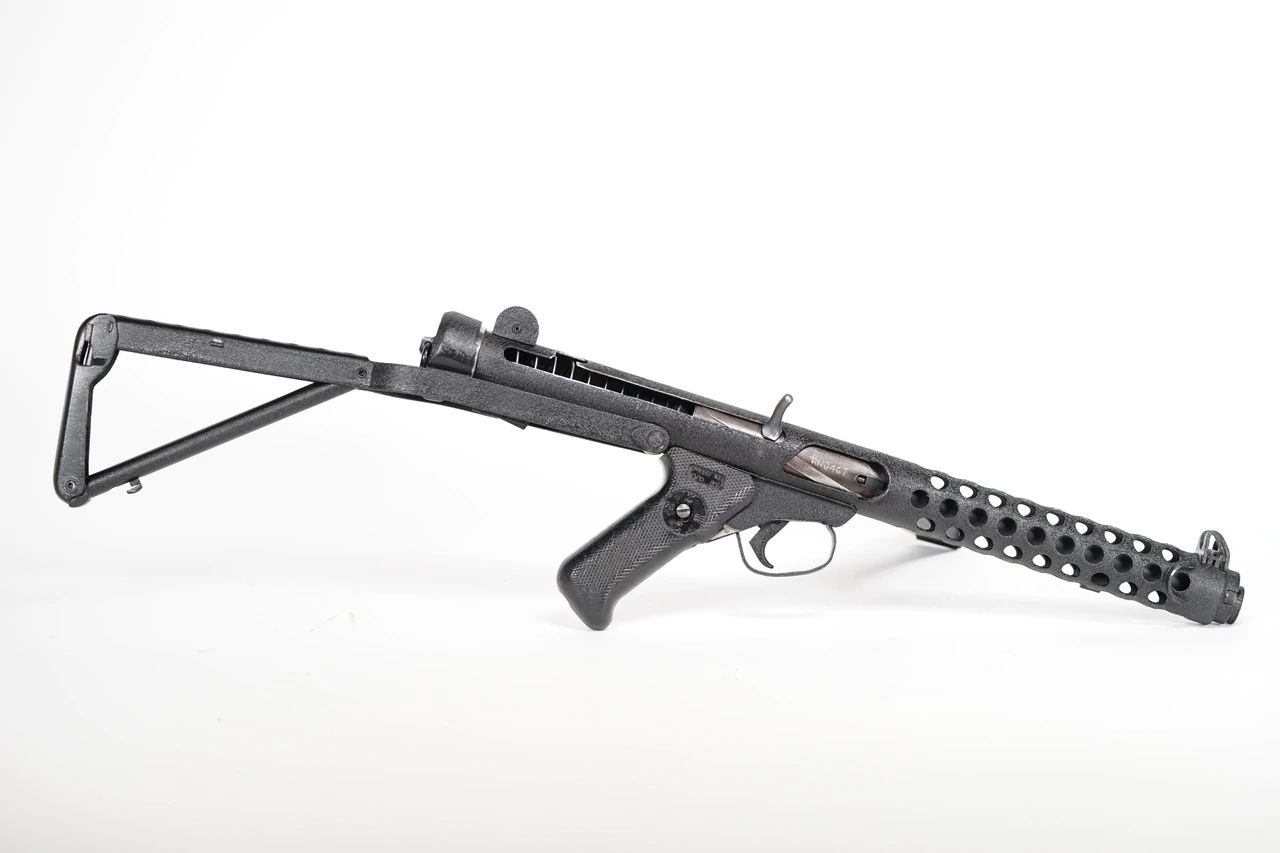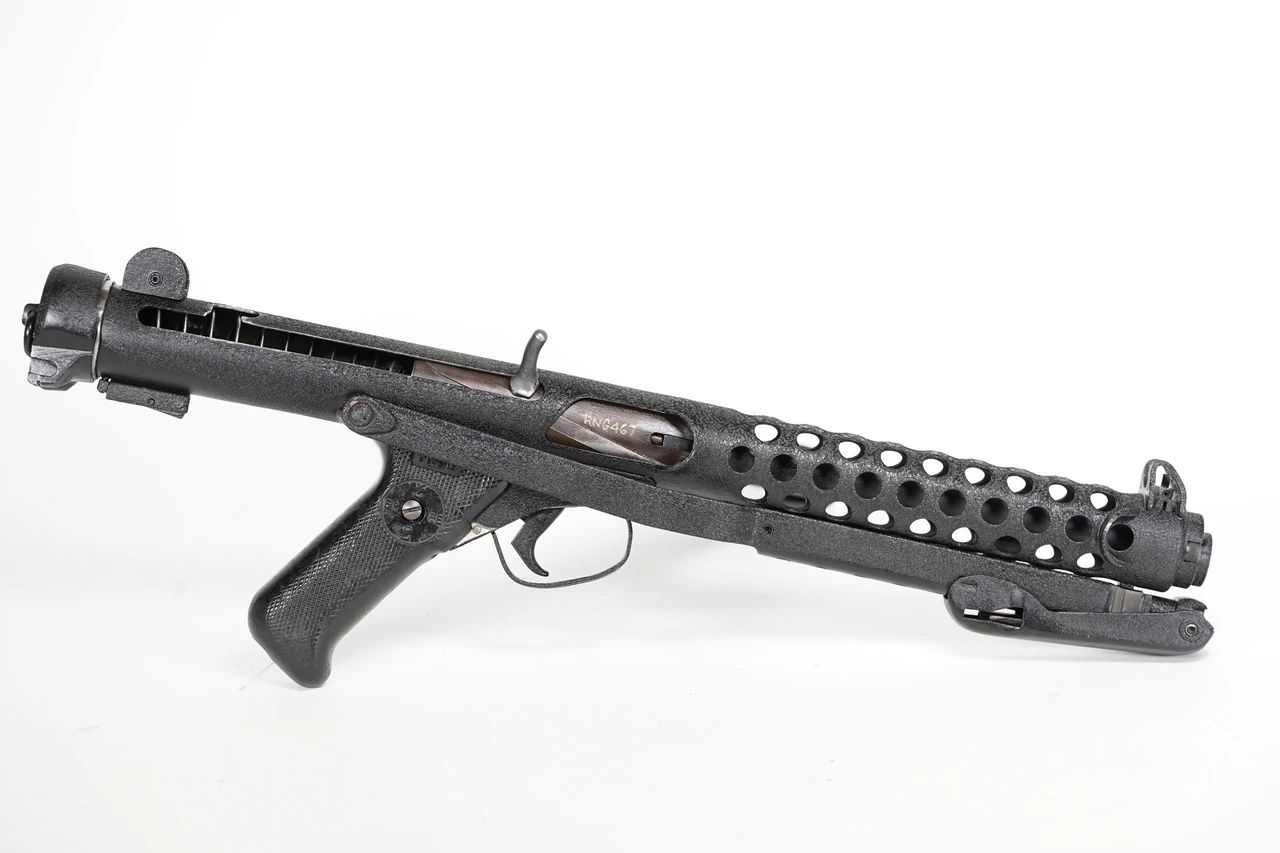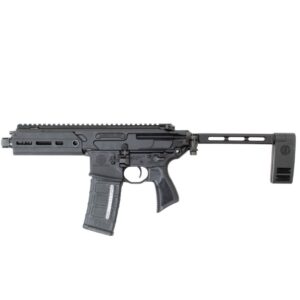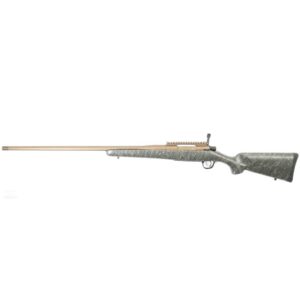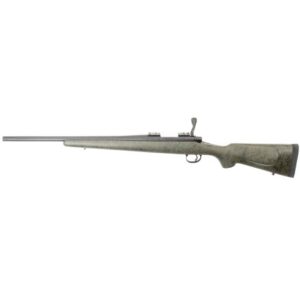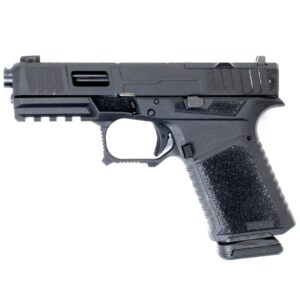Description
Catco (California Arms Tech Co) Sterling 9mm SMG
The Catco (California Arms Tech Co) Sterling 9mm SMG submachine gun is constructed entirely of steel and plastic and has a shoulder stock, which folds underneath the weapon. There is an adjustable rear-sight, which can be flipped between 100 and 200 yard settings. Although of conventional blowback design firing from an open bolt, there are some unusual features: for example, the bolt has helical grooves cut into the surface to remove dirt and fouling from the inside of the receiver to increase reliability. There are two concentric recoil springs which cycle the bolt, as opposed to the single spring arrangement used by many other SMG designs. This double-spring arrangement significantly reduces “bolt-bounce” when cartridges are chambered, resulting in better obturation, smoother recoil and increased accuracy. Additionally, the Sterling uses a much-improved (over the Sten) 34-round curved double-column feed box magazine, which is inserted into the left side of the receiver. The magazine follower, which pushes the cartridges into the feed port, is equipped with rollers to reduce friction. The bolt feeds ammunition alternately from the top and bottom of the magazine lips, and its fixed firing pin is designed so that it does not line up with the primer in the cartridge until the cartridge has entered the chamber.
The Sterling employs a degree of what is known as Advanced Primer Ignition, in that the cartridge is fired while the bolt is still moving forward, a fraction of a second before the round is fully chambered. The firing of the round thus not only sends the bullet flying down the barrel but simultaneously resists the forwards movement of the bolt. By this means it is possible to employ a lighter bolt than if the cartridge was fired after the bolt had already stopped, as in simple blowback, since the energy of the expanding gases would then only have to overcome the bolt’s static inertia (plus spring resistance) to push it backwards again and cycle the weapon; whereas in this arrangement some of this energy is used up in counteracting the bolt’s forwards momentum as well; and thus the bolt does not have to be so massive. The lighter bolt makes not only for a lighter gun, but a more controllable one since there is less mass moving to and fro within it as it fires.
The suppressed version of the Sterling (L34A1/Mk.5) was developed for covert operations. This version uses a ported barrel surrounded by a cylinder with expansion chambers. The Australian and New Zealand SAS regiments used the suppressed version of the Sterling during the Vietnam War. It is notable for having been used by both Argentinian and British Special Forces during the Falklands War. A Sterling was used by Libyan agents to kill WPC Yvonne Fletcher outside the Libyan Embassy in London, which sparked the 1984 siege of the building.
The Sterling has a reputation for excellent reliability under adverse conditions and, even though it fires from an open bolt, good accuracy. With some practice, it is very accurate when fired in short bursts. While it has been reported that the weapon poses no problems for left-handed users to operate, it is not recommended without the wearing of ballistic eye protection. The path of the ejected cartridge cases is slightly down and backward, so mild burns can occasionally be incurred by left-handed shooters.
A bayonet of a similar design as that for the L1A1 Self-Loading Rifle was produced and issued in British Army service, but was rarely employed except for ceremonial duties. Both bayonets were derived from the version issued with the Rifle No. 5 Mk I “Jungle Carbine”, the main difference being a smaller ring on the SLR bayonet to fit the rifle’s muzzle. When mounted, the Sterling bayonet was offset to the left of the weapon’s vertical line, which gave a more natural balance when used for bayonet-fighting.
For a right-handed shooter, the correct position for the left hand while firing is on the ventilated barrel-casing, but not on the magazine, as the pressure from holding the magazine can increase the risk of stoppages, and a loose magazine can lead to dropping the weapon. The barrel-casing hold provides greater control of the weapon, so the right hand can intermittently be used for other tasks. A semi-circular protrusion on the right-hand side of the weapon, approximately two inches from the muzzle, serves to prevent the supporting hand from moving too far forward and over the muzzle.
